Browse Exhibits (8 total)
1996 Summer Olympic Games

Every four years, the Summer Olympics puts the world’s problems aside and allows for brief moments of unity, appreciation, and healthy competition among countries and cultures. The 1996 Olympics were no different in Atlanta. Our group’s project and research was devoted to the history of the Centennial Olympic Games and how they impacted not only Atlanta, but also Athens and the state of Georgia as a whole. The Olympics take an incredible amount of planning, preparation, and volunteers to ensure the games run smoothly as desired. We were able to uncover some of the behind-the-scenes plans, factoids, and memories about the 1996 Olympics through the UGA Hargrett Special Collections Library. Because Athens was used for various aspects of the Olympics, there were many files, documents, and images from the Olympic Games that helped us obtain a greater understanding of the impact of the Olympic Games. Through the Special Collections Library and the Omeka exhibit software, we are able to learn, present, and instruct others on a crucial past event that helped shape our city and state to where we are today.
Alien Conspiracy: The Unexplained & The Unorthodox

Extraterrestrial conspiracies and “sightings” have been a prevalent part of human history throughout the world, often the result of mass hysteria and unexplained occurrences.
History of UGA: Residence Halls
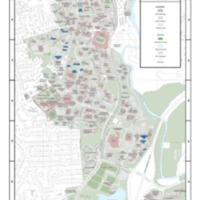
This exhibit examines the contributions that residence halls at the University of Georgia have made to the university’s vast history. Over thirty residence halls have been constructed at the University of Georgia since its founding in 1785. Many of these residence halls still hold their original purpose, while others have been demolished or modified for other uses. The residence halls at the University of Georgia each hold interesting information, and in piecing this information together, the history of the University of Georgia is put together in a unique lens. In this exhibit, the audience is taken on a tour of the University of Georgia through eleven notable residence halls. Information in this exhibit is drawn from the Special Collections Library, Hargrett Rare Book & Manuscript Library, and various digital databases. Information on the residence halls focuses on building development, architecture, modifications, namesake, and interesting stories. As a whole, this exhibit ties together a host of information pertaining to the residence halls at the University of Georgia, and it crafts a unique take on the University of Georgia’s history.
Keywords: Soule Hall, Mary Lyndon Hall, Rutherford Hall, Myers Hall, The Lower Five, Creswell Hall, McWhorter Hall, Vandiver Hall, Joe Brown Hall, Oglethorpe House, Building 1516
Hugh Leslie Hodgson
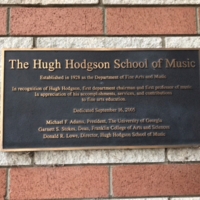
Hugh Hodgson, the namesake of the University of Georgia's School of Music, was the driving force for the development of music education at UGA. These items illustrate the impact of Mr. Hodgson on the music study program, the appreciation of music, student life, and the production and performance of music at UGA.
Hunter and Holmes' Integration into UGA
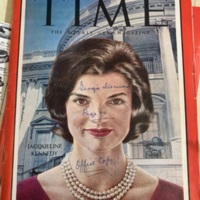
This exhibit dives into the racial integration movement at the University of Georgia in 1961-1962. Charlayne Hunter and Hamilton Holmes, the first two African American students to enroll in UGA, made pivotal strides in the integration and acceptance of African-American students at the university. The items of this exhibit reveal that during their time at UGA, both Hunter and Holmes endured hardship in their pursuit of education. Upon the arrival of Hunter and Holmes, many people lashed out in racist revolts, a supreme court case was tried, and the University came under fire for accepting these two students. Through these historic tribulations, the university began making progress in the direction of making UGA the inclusive, diverse school it is today. This exhibit explores documents and artifacts of the 1961-1962 time period of integration, giving different opinions, legal rulings, and multiple perspectives on the process of desegregation of the University of Georgia.
Marta: History and Development

The Metropolitan Atlanta Rapid Transit System has an exciting history involving complicated construction management, social issues, impressive technology, and bureaucratic complications. Even though MARTA has been successful over the years, it still has remained in controversy. The exhibit includes various forms of media, including videos, images, research papers, legislation, and original maps. The exhibit explores exploring social issues and racial divides of proposed track extensions to technical aspects of the trains and track engineering. The exhibit takes on various scopes in order to get a comprehensive view of MARTA. This ranges from a full analysis of the impact on MARTA of the Atlanta economy to specific technical features of the train system. It also explores the entire lifetime of the MARTA from its legislative inception to its future plans.
The History of Mental Institutions in the Eastern United States
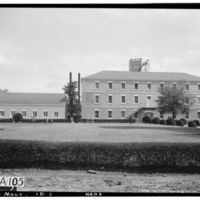
Mental institutions have a bad stigma around their name and this is mostly due to the history of these institutions, which were originally established to house not only the mentally unstable but the social outcasts within the society. Some common treatments, such as lobotomies and electroshock therapy, typically turned temporary patients into permanent ones due to the unethical harshness and ineffectiveness of the treatments. The eastern United States fueled this stigma as it housed many of these institutions such as South Carolina, Danvers, and North Carolina State Hospitals, Searcy Hospital for the Colored Insane, and even the largest - at the time of operation- in the world, Central State Hospital. Each of these hospitals held its own unique story and added their own encounters to the history of horror stories. These conditions within these institutions would not start to change until reformers, such as Dorthea Dix and Thomas Kirkbride, stepped in to change these notions around them. Endless cases, such as O'Connor v. Donaldson, were brought onto the stand for years until rules and regulations began to change. Even after rules had been in place, current institutions still fight against the stigma that was given to them historically by their predecessors.
The Integration Crisis at the University of Georgia
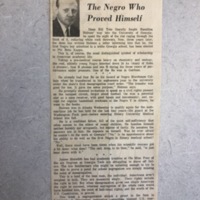
This exhibit examines the federal court-ordered integration of the University of Georgia, which took place in January of 1961. This process followed the University's refusal to admit two African American students, Charlayne Hunter and Hamilton Holmes. The chain of events that followed this historical decision entailed violence, hate speech and ultimately an immense threat to the safety of Hunter and Holmes, as a riot broke out on Myers Quad in protest of Hunter's presence at the university. Thus, the events that took place from 11 January 1961 and those that followed at the University of Georgia became known as the Integration Crisis.
This exhibit further discusses reactions to the process of integration in examining the media, the student body, the administration of the University of Georgia, and the individual perspectives of Charlayne Hunter and Hamilton Holmes. Through these various approaches, this exhibit holistically details the events that took place as well as the historical and current implications of the turbulent process of integration at the University of Georgia.